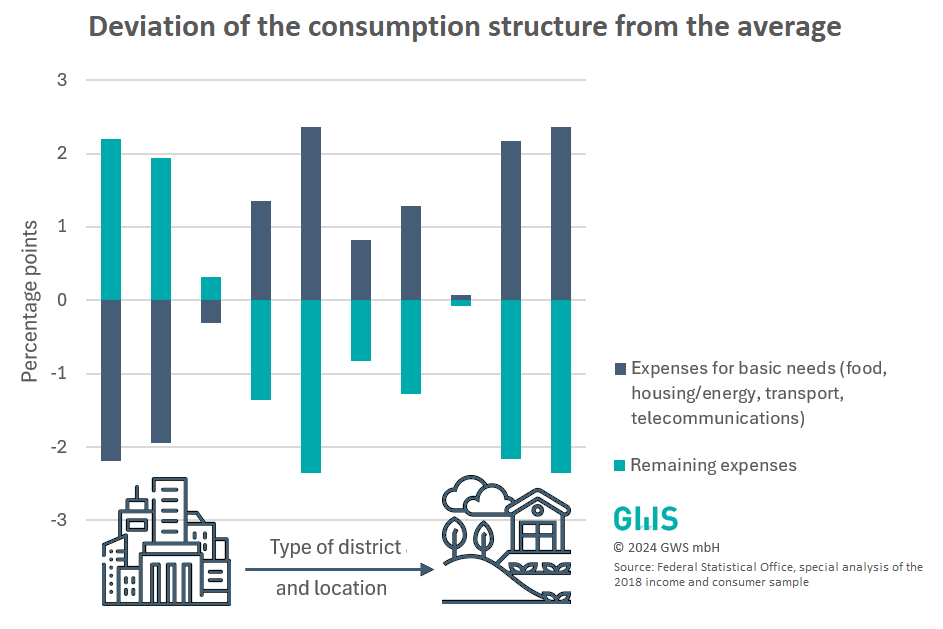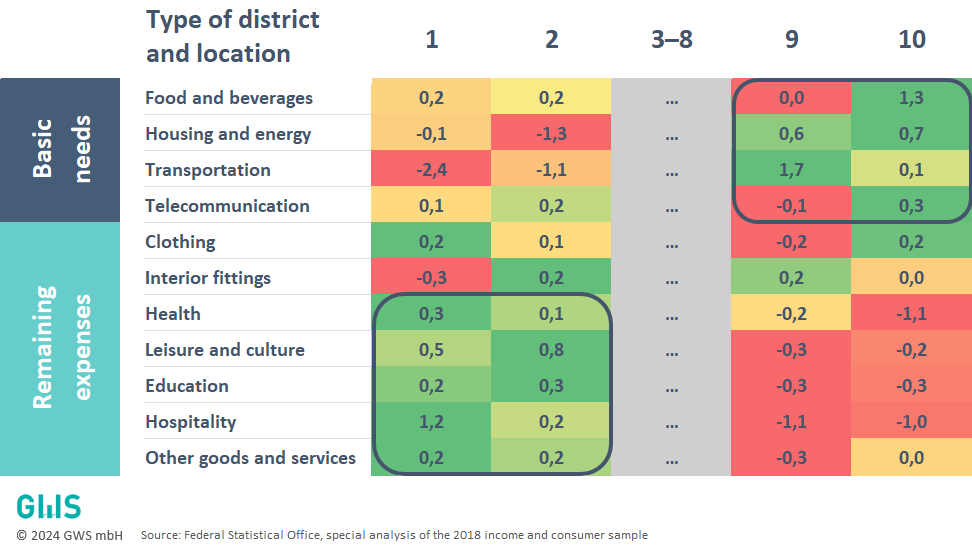Urban versus rural consumption patterns
Our figure of the month 09/2024
Private household consumption is a key driver of the German economy and reflects the living conditions and needs of the population. Consumer behavior strongly depends on the income situation of households and the respective settlement type. In urban regions, consumption patterns are often characterized by a wide range of goods and services that are easily accessible, especially for higher-income households. In rural areas, on the other hand, the supply is often more limited and households sometimes have to travel further to access goods and services. Income differences also play an important role here, as they strongly influence access to consumer goods.
Especially in times of increasing social division, it is crucial to take into account the different consumption patterns of all sections of society.
Low-income households, whether in urban or rural areas, face particular challenges as they tend to be more affected by economic crises. In order to reduce social inequalities and strengthen social cohesion, measures must be developed to make consumption sustainable for all population groups. Sustainable consumption that contributes to the well-being and stability of society as a whole can only be achieved by taking full account of different income levels and settlement types. For this reason, this figure of the month looks at the different consumption patterns in the population by district type and location. This allows us to examine the different structures between metropolitan, urban and rural areas.
Figure 1 shows the deviation of the consumption structure from the German average for 10 different regions according to district type and location, in each case for expenditure on basic needs and other expenditure.

The first two columns of the district type and location scale reflect the categories of very central and central cities. Columns 3 to 5 illustrate the deviations in the urban districts from very central to peripheral. 6 and 7 represent the rural districts central and peripheral, from the 8th column onwards the rural districts begin with descending population intensity.
Figure 1 shows a clear difference - especially when comparing the major cities (columns 1 & 2) with the most rural regions of the country (columns 9 & 10). The inhabitants of rural regions spend proportionately more on their basic needs.
Figure 2 illustrates precisely this difference between expenditure on basic necessities and the remaining expenditure in detail. The significantly higher expenditure on “food and drink” and “housing and energy” is particularly striking in district type and location 10 (sparsely populated rural districts, very peripheral). While the very urban regions spend more on leisure, education or restaurant visits.
The key question is whether this is because people in the more rural regions are unable or unwilling to spend more on other expenses. In other words, whether their income does not allow for more frequent restaurant visits or whether it is simply due to the lack of restaurants in peripheral regions.

For this reason, the GWS team will be working in the coming months on an even more detailed modeling of the consumption structure at district level in Germany. Subsequently, the income side will also be examined in more detail in order to answer the question as thoroughly as possible.
Other figures can be found here.

